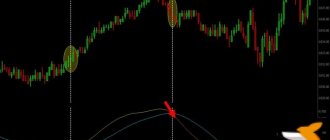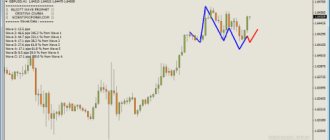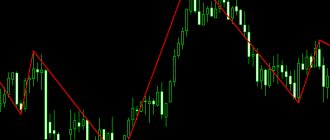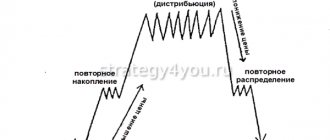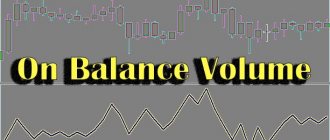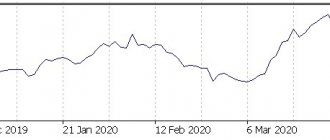One of the classic oscillators that is easy to understand for experienced and novice traders is the Momentum indicator. The history and year of its creation are unknown, but this mathematical algorithm has been repeatedly described in classic trading textbooks, for example, in the book “Technical Analysis of Futures Markets” (author John Murphy, 2008). Since then, it has been actively used to study the dynamics of cryptocurrency and other assets.
What kind of indicator is this?
This indicator was created by the talented French mathematician Paul Emile Appel, who is the father of many ingenious technical devices and the author of more than a hundred books and articles on analysis, geometry and mechanics.
Appel was born on September 27, 1855 in Strasbourg. In 1873 he entered the Ecole Normale Supérieure in Paris. In 1876 he received the degree of Doctor of Mathematics, defending his dissertation. In 1885 he received a professorship in the department of rational mechanics at the University of Paris. In 1892 he was elected a member of the French Academy of Sciences. In 1911 he became a corresponding member of the St. Petersburg Academy of Sciences, and in 1925 he was elected a foreign honorary member of the Russian Academy of Sciences. By the way, the Appella asteroid, discovered in 1922, is named after Appel.
The Momentum indicator is perhaps the simplest and most understandable of all trend indicators. To find out if your baby is growing fast enough, you can measure his height every month and compare it with his height six months ago. Then you will know whether your child is growing normally, is so behind that he needs to be taken to the doctor, or is growing so rapidly that he needs to think about a basketball coach. Momentum shows you whether a trend is accelerating or slowing down, or perhaps maintaining its speed.
When momentum reaches a new high, it suggests that the market crowd is becoming more optimistic and the rally is likely to continue. When momentum falls to a new low, it indicates that crowd pessimism is growing and prices are likely to continue falling in the future.
When prices rise and momentum falls, it alerts you that a top is near and it's time to take profits from holding positions and tighten stops. When prices make a new high and the momentum high is lower than the previous one, bearish divergence provides a strong sell signal. The opposite is true in a downtrend.
Sometimes a smoothed Momentum indicator is used, which reduces volatility through the use of moving averages.
The popularity of the indicator is primarily due to its simplicity, versatility and the fact that it is one of the few leading indicators. Momentum not only reacts to the direction of price movement, but also changes direction before prices do so. As a rule, the indicator turns first and prices continue to rise, and only then the trend reaches the top and turns down. If the indicator begins to fall more slowly and then turns upward, then soon the trend will also reach a minimum and reverse.
Here, however, it is worth emphasizing that all oscillatory methods are designed to trade in the direction of the prevailing trend, which is more important than any signal. In conditions of a pronounced bullish or bearish market, you can use only those signals that call for buying or selling, respectively.
Principle of operation
The main task of the indicator is to track the trend and price acceleration.
If momentum grows and draws a new high, then most often this indicates bullish sentiment, and there is a possibility of continued growth. If a new minimum is drawn, then the trend may continue to go down.
Using the momentum chart and price, you can consider signals of convergence and divergence or, in other words, their convergence and divergence. If quotes are rising, and the momentum chart bends down and begins to roll back, this may mean a quick reversal of the movement. In such a situation, you can move your stops to breakeven and think about exiting your positions. For sales, everything is mirrored. If the price rises again and draws a new high higher than the previous one, but the momentum does not update its highs, then there is a divergence, indicating a decline in buyer interest, and there is a high probability of a downward movement. Well, for sales everything is the same.
But momentum is not the holy grail. False signals are also not alien to him. Therefore, it is important to give more weight to signals in the direction of the trend.
Installation and settings
The Momentum indicator shows signals in a window located under the price chart image. It is distinguished by its simplicity, so its installation does not require special skills. In most terminals the indicator is already built-in. If you need an improved version, for example with an alert, then you can get it from our forum.
The indicator's settings include only the averaging period. You can also select the price for calculation and set levels. By default, the level is already set to 100 - it serves as the zero line for the Momentum indicator.
A ten day period is a fairly common calculation period. However, any period of time can be taken for analysis. When the period is shortened - say, to five days - the sensitivity of the indicator curve increases, which leads to an increase in the frequency of its fluctuations. Long periods, such as twenty days, appear as much smoother curves with a less pronounced frequency of fluctuations.
So, using 10-day momentum, we compare today's closing price with the price ten days ago. If today's closing price is higher, the indicator will be positive. If today's closing price is lower than the price ten days ago, then the value is negative. When using momentum, the assumption is that the price differential (the difference between today's closing price and the price some time ago) should steadily increase as the trend develops. In other words, the rate of price change is increasing. If prices rise and the indicator begins to level off, it means the trend is slowing down. This could be an early sign of its end.
Calculation formula
Momentum is the simplest trend indicator. Its formula is so simple and intuitive that it does not require description. The excess of current closing prices over past ones indicates an uptrend, and if current prices are lower than past ones for the selected time interval, this means a downward trend.
Momentum smoothing is sometimes used to reduce its volatility. Moving averages are used for these purposes.
Classically, the value of the Momentum indicator is calculated as the difference between the closing levels of the last and first bars on a separate interval. The value of the interval depends on the indicator coefficient and in most cases is taken equal to 14. The formula is as follows:
M(j) = CLOSE(j) – CLOSE(j – n), where M(j) is the Momentum value; CLOSE(j) — closing price of the current bar; and CLOSE(j – n) is the closing price of the bar that appeared on the quote chart n timeframes ago.
The formula shows that the indicator value can be both positive and negative. And the more Momentum moves away from zero, the more clearly oversold or overbought conditions are expressed in the market. At the same time, for different intervals and different currency pairs, the amplitude of Momentum fluctuations will be very different.
The above formula is taken from the book “Technical Analysis of Futures Markets” by John J. Murphy and is considered the classic formula for calculating the indicator.
However, there is another variation of the calculation of the Momentum indicator according to the book “Technical Analysis from A to Z” by Stephen Akelis, in which Momentum coincides with the Rate of Change and is defined as the ratio of the current price to the price that occurred n periods ago:
M(j) = CLOSE (j) * 100 / CLOSE (j – n)
In the MT4 trading terminal, Momentum is calculated using the second formula, so it fluctuates not around zero, but around the 100 level.
It was this formula that at one time migrated to many technical analysis programs, but it is not correct enough.
There is also a separate formula called Chande Momentum Oscillator (CMO). It is calculated as follows:
MomentumSimple = C – Cn,
where C is the closing price of the current period, and C-n is the closing price n candles ago. If MomentumSimple >0, then M1= MomentumSimple, and M2=0; If MomentumSimple <0, then M2= -MomentumSimple, and M1=0.
Expiration
Expiration of binary options (from English Expiration) - the end of the transaction period, when the price of the asset rises or falls, the obligations will be fulfilled, that is, the transfer of funds to the trading participant. Every binary trader thinks about the role of expiration in the outcome of a transaction, and for good reason. The income will depend on what expiration date you specify. Expiration times can be from a minute to more than a month. That’s why binary options are so popular – you can get income in just a minute.
Depending on the expiration date, binary options are divided into:
- Short-term – with an expiration date of less than an hour (for example, “60 seconds” options are especially popular among beginners now). Trading such options is high risk because it is difficult to predict market dynamics.
- Long-term – with a longer execution period: from a week to more than a month. These options are popular among professional traders who play on the stock exchange for a full-fledged income. In this case, before placing a bet, it is necessary to analyze in detail the behavior of the asset, and do not forget about the macroeconomic reasons for changing market trends.
Is it possible to extend the expiration of options?
Maybe. Some brokers allow market players to change the expiration date. Extension of expiration dates is possible only in the direction of its increase; To extend the terms, you need to deposit funds - approximately 40% of the bet.
Expiration rules:
- If you are new to options trading, when participating in a trade, choose a long expiration date.
- Work with a broker that allows you to increase expiration dates, this will help minimize the risks of possible unsuccessful transactions.
- In order to get quick income in just a minute, participate in short-term (from a minute to several hours) trading. Do not forget that such trading is risky.
- In order to receive a large, stable income, participate in long-term trading (from a week or more than a month). Such trading is characterized by high profitability, and it is easier to predict the outcome of the transaction: using strategy, trading conditions (economy, news).
Expiration and financial losses
Always remember that expiration always means unplanned losses, be prepared for this. Predicting the outcome of a transaction, as well as what events will affect it, is difficult and almost impossible. The market is highly dynamic and trends are constantly changing. To protect yourself, keep a reserve of funds that will help you, in case of failure, return the funds to yourself.
Application as an oscillator
No matter how convenient it is to use this indicator, the following question arises. Oscillatory analysis is most convenient in case of extreme price positions. But how can we determine how strong or weak a market moment is currently if we have not set any criteria other than the zero line? This problem can be solved in two ways: either visually assess the value of Momentum in comparison with its previous declines and rises, or turn to other oscillators.
This is not to say that the first solution to the problem is completely unacceptable. Let's simply determine the historical highest and lowest levels of Momentum and compare them each time with the current value. A sell signal appears when Momentum or its moving average rises by a significant amount, reverses, and begins to fall.
A buy signal appears when Momentum or its moving average falls by a significant amount, reverses and begins to rise. This “significant amount” will vary on each Forex currency pair and should be tested separately. Moreover, this value will be different over different time periods.
In this case, it is more convenient to normalize the Moment plot by dividing the values by the largest amplitude achieved. As a result, it will change from – 1 to + 1. Reaching the danger zone, i.e. approaching one in absolute value, the Momentum value signals a weakening or strengthening of the price trend. For example, the achieved value of 0.95 indicates that the price is rising too quickly and the next stage will be consolidation or even decline.
The idea of normalizing Momentum was brought to life as the Commodity Channel Index. Donald Lambert, the author of this index, uses the average of prices over the several days for which the calculation is being made as a divisor, then multiplies the resulting value by 1.5. The resulting curve is completely similar to Moment, but its fluctuations are considered in relation to the -100 and +100 levels.
Money management
Stable profitable trading is much more than two or three successful trades. Not every trader comes to this conclusion and this strategy. We can talk about profit when funds are managed consciously and thoughtfully. The art of money management distinguishes a professional from someone who sees nothing but a state of failure behind losses and empty deposits. How to be? The answer is simple. money management seriously - the art of money management, which includes the following rules:
Minimum bid
When starting trading, do not put all your funds on one option. Start with the minimum bet value. This way, you will not lose the entire amount at once and, in the event of an unsuccessful outcome of the transaction, you will be able to participate in trading again.
Minimum deposit
When opening an account with a broker, do not deposit a large amount into it at once. Remember that the outcome of trading is unpredictable and there will always be risks of losing funds. Take care of your funds and spend them wisely.
Take care of your funds
Manage your funds wisely, trade consciously: do not put all your money in one trade; do not place more than 5% of your deposit on one trade. In case of an unsuccessful transaction, you will need money to continue trading.
Minimum number of assets
When starting trading, gradually increase the number of assets being traded. Master the system, get to know trading in detail, try to start trading with one or two assets and gradually you will be able to add other assets: currency, futures, stocks, etc. Remember that a large number of transactions is a burden on your funds, on your deposit, and you may not notice how you lose money.
Minimal emotions
In trading, it is important not only to be a professional and have experience of successful transactions, it is important to keep your emotions under control and not give in to them no matter the outcome. If you look at the statistics, all it takes is three failed trades for you to start panicking and try to get your money back. Remember the rule of three: after three trades, whether they were successful for you or not, stop trading. So, you learn self-control and save your money, which will bring you even more income with a reasonable approach. Money management, as one of the elements of a successful trader, will make your trading truly successful.
Application as a trend indicator
The Momentum indicator can be used in Forex as a trend indicator. In this case, the intersection of its zero line is used as a signal. When the line crosses from top to bottom, a sell signal is given, and when from bottom to top, a buy signal is given.
The transaction is made at the opening of the next candle, if this opening (and the closing of the previous candle) occurs in the direction of the breakdown of the 100 zone. The stop loss is set behind the last price extreme.
Analysis of indicator extremes
You should very carefully monitor the extremes reached by the indicator. The fact is that extremely high or low values of the Momentum indicator suggest a continuation of the current trend. If the indicator reaches extremely high values and then turns down, we should expect further price increases.
As you can see in the figure above, very high and very low values of the indicator that stand out visually followed by a rollback confirm the continuation of the trend. Thus, on a pullback, after a particularly high peak, you can look for an opportunity to enter into purchases.
A sharp jump in the momentum indicator is usually a signal that the market is approaching its top. After a sharp rise or fall of the indicator, as a rule, a reversal or stop in price movement occurs. At such moments, it is best to close previously open positions or, at a minimum, press stops closer.
conclusions
What can I say, the Momentum indicator is an old forgotten classic of the genre. In fact, the tool is very interesting and many, it seems to me, undeservedly ignore it. The moment may well fit into any trading system, since it gives very high-quality signals, and the result can be an excellent trading system.
Debit card from Sberbank
Of course, there are certain nuances that require understanding, but much will come with time. The main thing is that you don’t need to rush things, let everything take its course. Focus on your learning process, strive to be a systematic trader and over time the result will definitely come.
I understand you, you really want the results to be quick and stunning, but, unfortunately, it just doesn’t work that way. Only your decisive actions and motivation will help you pass this path.
Momentum and its moving average
The momentum indicator works very well when paired with a moving average built based on the readings of this indicator. You can build a moving average as follows:
In the figure below, based on the readings of the Momentum indicator (48), EMA (8) was plotted according to the settings from the figure above:
Entry signals are generated by analogy with an indicator such as Stochastic. When the indicator crosses its moving average from top to bottom above the level of 100, it becomes possible to enter sales. The opposite is true for shopping. In this approach, the distance to level 100 is quite important - the further the intersection is from the level, the more reliable the signal.
Let's sum it up
There are three main trading signals that can be used with the momentum indicator. These signals include the 100 line crossover, momentum crossover, and divergence signal. The best signal for the momentum indicator is the divergence signal. But no matter what type of signal you use, it is highly recommended to use other structural factors in technical analysis.
You should not trade a momentum indicator without first analyzing the underlying overall picture in the market. If you stick to this principle, you will be less prone to mistakes and false entry points.
Combination of methods
It is worth noting that it is more reliable to use Momentum as an oscillator together with a trend indicator. Moreover, this role can be played by Momentum itself with a long period. If the trending Momentum is above 100 (ideally, with consistent updating of its own highs), then you should make purchases when the shorter Momentum drops to 100 and is pushed up. At the opening of the next candle after such a repulsion, you should make a purchase, placing a stop below the last extreme. The opposite is true for a downtrend.
After long Momentum stopped updating lows in the chart above and broke through the zero line upward, selling was no longer made. Thus, Momentum with a longer period can be a trend indicator, and provide advanced information about the development of the trend. A trader should look at the nature of the formation of extreme points on the trend Momentum to confirm the trend.
Moreover, the trend Momentum can form divergences with the price, ceasing to update the extrema in the trend body according to the indicator when the extremum is updated by the price. This signal is especially good when the trending Momentum breaks its trend line and the shorter Momentum gives a buy signal by touching and pushing off the 100 line towards the divergence.
When do the impulses appear?
There are three reasons for the appearance of impulses in the market:
- Fundamental. This group includes news and other important information (various force majeure events, such as natural disasters) that have a significant impact on a certain currency.
- Technical. This group includes situations where many traders have opened large volume orders with prices located close to important levels. In addition, technical reasons include cases of rapid closure of large options or futures contracts (monthly, weekly and others).
- Psychological. Characteristic of situations when asset prices fluctuate around important (psychological) levels over a fairly long period of time. In such a market, tension among traders is constantly growing.
The reasons for the first nature are difficult to predict. Therefore, it is recommended to work with technical and psychological factors, which can be seen on the current charts.

